From the leash holder's perspective, trust has become more and more of an issue for me as time passes. There's a grim realization in just how many past relationships, even the most close and strong of ones, have ended in the breaking of trust.
So where does that lead? Incrimentalization. We very quickly start rationing our trust. Segmenting off degrees of trust and who will get them. Much of this can be an unconscious process, but for many there's an increasingly fixed set of tiers for trust levels. From those you know NEVER to trust, those who you're suspicious of, and those people you've never met, to your friends, family, and loved ones who have some basic notion of trust - knowingly or not, we sort the people of the world into these often unlabeled and extremely fluid categories.
Which of your friends from work would you invite to Thanksgiving if they were alone?
Which of your friends would you let borrow your car?
Who do you know that you'd trust with a spare key to your house?
All these questions and many more form the pseudo-labels on our levels of trust.
And in the regard, trust isn't a single dimension measure.
We might trust the the 15 year old babysitter down the street to watch the kids for a few hours, but we won't trust her to drive your car.
We might trust our best friend from highschool to drive our car, but would NEVER leave our kids with them.
Trust is multi-dimensional like that. It's an inter-tangled web of variables and situations that form a complex net from which we view our world.
And if you picture your "trust web" with thicker strands where trust exists and missing strands where it doesn't, you'll start to be able to see a picture reflecting yourself. Many younger webs may be pretty and well rounded, even pristine in their appearance.
Older webs quickly begin to have missing spots. Dark regions encapsulating pain and betrayal. At the same time, the older webs, if they're lucky, have a few thick strands that stand out above the rest. In all the turmoil, in all the patchwork of failed relationships and broken promises, those thick strands represent the people in our lives that have been ever-present. Those who we hold dear to us, who have in their own actions helped give us the threads that form the foundation of our lives.
When it comes to meeting new people, the more holes the web has, the more easily they'll slip past. The faster we are to let others pass through us without notice. And yet, even with a spotted web of older age with barely any threads left; every now and then a person comes by and sticks all the same. And when they do, they start to add their own threads. The more vacant the web, the harder it is to start adding to it too - there's so little to hold on to - but if they manage to, if they stick around; well... that's how we begin to heal.
My web has many holes - even one so large and so central to my web that I thought the web would collapse completely. Then, as if fate deemed it so and karma deemed it just, a friend found her way into my web. She's still working her way around the outer edge, slowly adding strands here and there, but she's there, adding a strand at a time, a day at a time.
This is how we heal.
Welcome to the BDSM Library.
Results 1 to 12 of 12
Threaded View
-
01-09-2010 #12
Thread Information
Users Browsing this Thread
There are currently 1 users browsing this thread. (0 members and 1 guests)
 Members who have read this thread: 0
Members who have read this thread: 0
There are no members to list at the moment.






 Reply With Quote
Reply With Quote